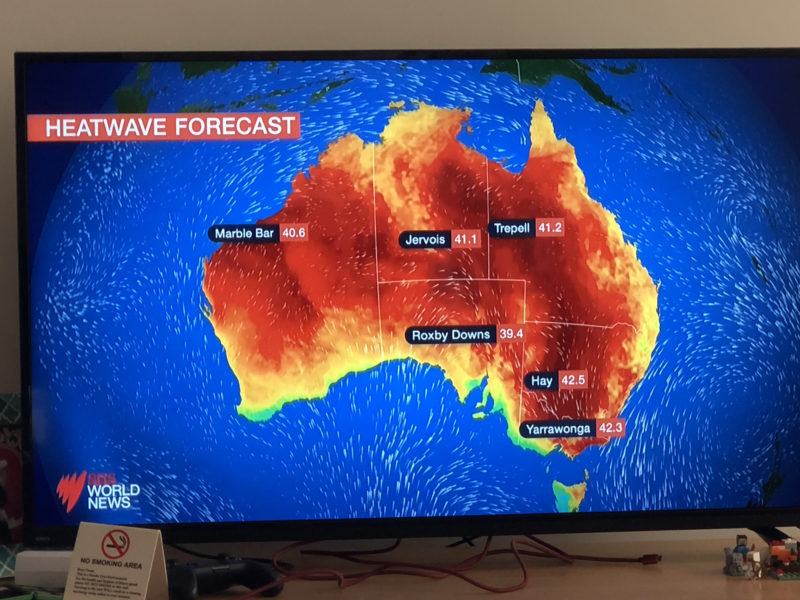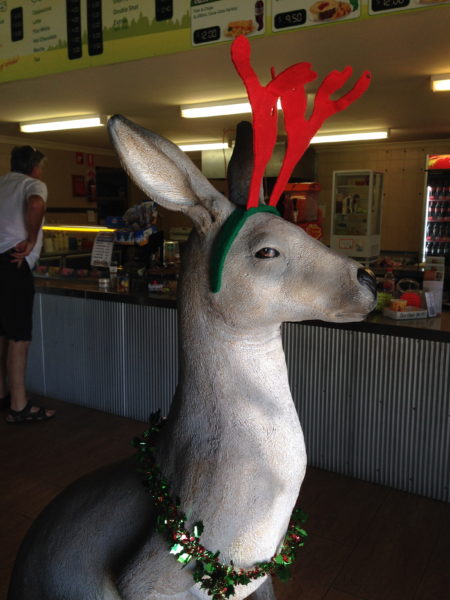When I was a small child living as an expat in Thailand, a lot of my cultural inputs were American, especially around July 4th (the annual party at the American club featured fireworks, which terrified me) and Christmas. We had a few vinyl records of Christmas carols. I loved the music, but the context confused me: In tropical Thailand, we never had snow or even cold weather. I didn’t know what a chestnut or a holly was, had never seen a reindeer, and Santa’s furry red suit would have been stifling in Bangkok temperatures. Though I longed to experience a “white Christmas” and was excited about decorations and presents, I felt disconnected from the “holiday spirit” that seemed so important to others. This continued to be true even when I later lived in places that did have cold and snow (both overrated, in my opinion).
The weather in Thailand was always different from what I read about in English-language books or saw in movies: we had a hot season and a wet season (also hot). The idea of four seasons was strange. I was never cold in my life (not that I remembered, anyway) until we went through Europe in the winter of 1969 on our way back to the US for home leave.
We returned to the US to live in 1971, where I finally experienced the weather I thought was supposed to be normal – but it wasn’t normal to me. Later in life, as I moved further and further from the equator, I also had to get used to the idea that the days grew shorter and longer over the course of a year – the seasonal amount of daylight hadn’t changed enough in Thailand for me to notice.
Living in the US and Italy, I became accustomed to the changes of season in northern climates, though I never liked the short days and long nights of winter. I got used to having four seasons, and knowing the months when those seasons would occur. My birthday in late November was always going to be cold (and often fell on the Thanksgiving holiday weekend). Christmas lights make sense because it’s a dark time of year – Brendan and I tended to keep them up all winter in our San Jose home. The rollback of daylight savings time in November, resulting in a 5pm sunset, plunged us into literal and emotional gloom every year.

We escaped about half of this year’s US winter because we arrived in Sydney on December 23rd – one of the longest days of the year, with over 14 hours of daylight. There were many weeks of warm days after that, although this summer has been cooler than usual and very rainy (unprecedented flooding rains for the time of year in New South Wales this week – thanks, climate change!). Now it’s the autumn equinox and we’re heading into winter. Which won’t be much of a winter by US/Canada/Europe standards: the average low temperature in July, the coldest month of the year, is 8C/47F – even San Jose gets colder than that. And the average high that month is 17C/62F. I did not bother to bring sweaters to Australia.
The reversed seasons are somewhat disorienting – this time last year, my San Jose garden was well underway.
After last year’s extreme lockdown gardening, I can wait another six months to plant (and won’t be able to garden on anywhere near that scale here anyway). It’s weird, though, to be constantly exposed to northern hemisphere tropes and assumptions about the seasons. Online advertisers are really not smart (why does anyone spend money on “targeted” ads?): though I have set my location in all my profiles to say I’m in Sydney, I still get ads for US products that I couldn’t buy even if I wanted to. So now I’m starting to see ads about spring, which are incongruous here.

The standard western/Christian (co-opted from pagan) holidays fit even more oddly in the southern hemisphere than at the equator. Christmas is a winter solstice festival, hence the celebrations with lights and fires on the longest night of the year. Christmas lights in Australia seem somewhat pointless – you can’t even see them until full dark (9:30pm in Sydney in December). Easter is a pagan celebration of spring and fertility, which again feels odd as the days are getting shorter and colder. Schools have a two-week term break in June/July, but there’s no midwinter holiday to alleviate the darkness (here, too, we will have 5pm sunsets). But Australia is a huge country; we can escape to the tropics.
The long school holiday is six weeks from mid December to late January, so everyone can enjoy the summer. In western Sydney, schools go back a week later, because the inland parts of Sydney get far hotter, and in recent years extreme heatwaves have been particularly horrible in schools, none of which have air conditioning.
I’m also often confused about what day of the week it is. Sydney is 18 hours ahead of the US west coast meaning that, most of the time, the US’ today is our yesterday. Holidays feel anticlimactic, especially online: by the time many of our friends were celebrating New Year’s Eve, it was already well into January 1st for us.

Because we still work with the same teams on the US west coast, Brendan and I both keep as close as humanely possible to a California schedule: we are available for meetings at 7am our time, which is currently 1pm in Los Gatos/Seattle (it was noon, until the US started daylight savings time this week, and scheduling will get worse by another hour on April 4th, when daylight savings time ends here). The US’ Monday is our Tuesday, so our work week starts on Tuesday morning and ends Saturday. Fortunately, both of our employers try to observe “no meeting Fridays,” so we aren’t always getting up early for meetings on Saturdays. Sunday is the only day we get completely off – we don’t have work, Mitchell doesn’t have school. Mondays we don’t work, but someone has to get up and take the kid to school. So by the time it’s Friday in Australia I feel like it ought to be the weekend, but for us it isn’t. And I never really feel sure what day it is.
At least Mondays we mostly take off – it’s nice to have a day just to the two of us, conducive to expeditions, like last week’s trip to Wottamolla Bay.




Hi Deirdre, I loved reading your post about your move and your early years. I actually knew you when you moved back to the US in the 70’s. We were very close and I gave regretted losing touch. Please reach out if you’d like to catch up – Anna ??